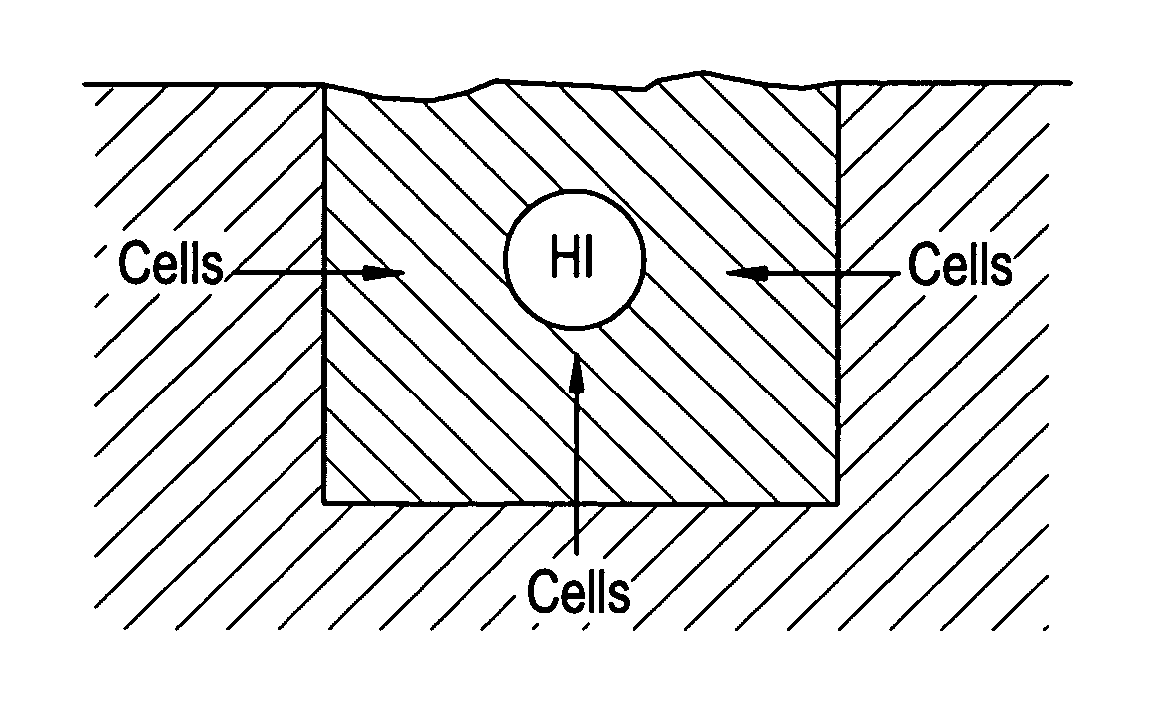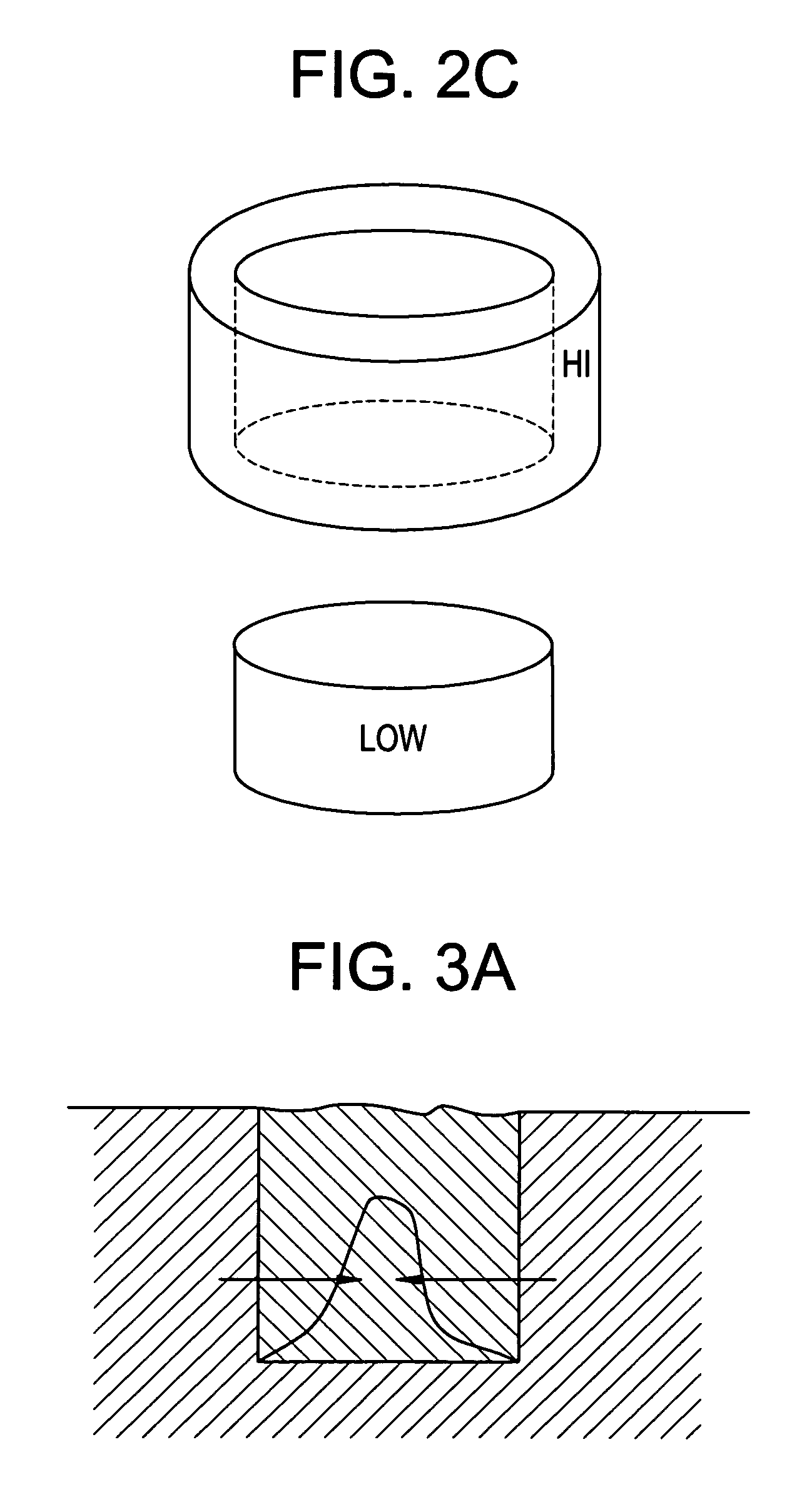Musculo-skeletal implant having a bioactive gradient
a bioactive gradient and musculoskeletal technology, applied in the field of biocompatible tissue implant devices, can solve the problems of surgical intervention, articular cartilage tissue injury will not heal spontaneously, and the cartilage and underlying bone of the joint will be gradually destroyed, so as to enhance the chemotactic properties of the bioactive agent, and accelerate or enhance the musculoskeletal repair process
- Summary
- Abstract
- Description
- Claims
- Application Information
AI Technical Summary
Benefits of technology
Problems solved by technology
Method used
Image
Examples
Embodiment Construction
[0045]For the purposes of the present invention, a “matrix” is interchangeable with a “carrier”. “Presented to the cellular environment” means “not sequestered” or “sequestered, then released” or “sequestered”.
[0046]A “bioactive agent” or “agent” is a protein (for example, ECM molecules, growth factors, signaling molecules, etc), gene, small molecule, DNA or RNA fragment, peptide, virus, sugar or mineral.
[0047]The term “chemotaxis” is intended to include hepatotaxic effects and movements.
[0048]It is believed that designing an implant to possess a spatially-graded chemotactic factor concentration profile can be beneficial in two ways. First, the resulting chemotaxis could enhance the uniform distribution of viable cells within the implant. Second, it could enhance tissue integration with the surrounding native tissue.
[0049]It is often the case that an implant contains either no cells or cells present only upon an outer surface of the implant. In such cases, a chemotactic bioactive ag...
PUM
 Login to View More
Login to View More Abstract
Description
Claims
Application Information
 Login to View More
Login to View More - R&D
- Intellectual Property
- Life Sciences
- Materials
- Tech Scout
- Unparalleled Data Quality
- Higher Quality Content
- 60% Fewer Hallucinations
Browse by: Latest US Patents, China's latest patents, Technical Efficacy Thesaurus, Application Domain, Technology Topic, Popular Technical Reports.
© 2025 PatSnap. All rights reserved.Legal|Privacy policy|Modern Slavery Act Transparency Statement|Sitemap|About US| Contact US: help@patsnap.com



